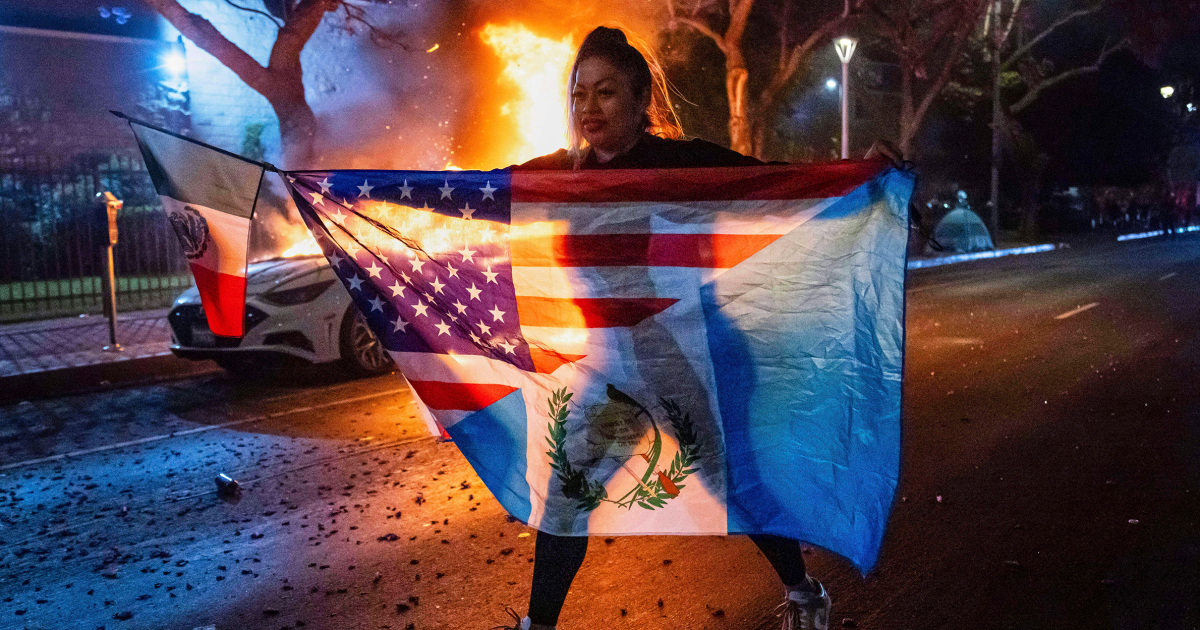California and the West Coast
California has been a focal point for protests recently, primarily driven by opposition to Immigration and Customs Enforcement (ICE) policies. Reports indicate that thousands participated in demonstrations across the state, particularly in cities like San Francisco and Los Angeles. It’s a reflection of the state’s diverse population and the intensity of feelings around immigration policy.
The Climate of Protests in San Francisco
On a recent Monday, thousands took to the streets of San Francisco for the second day of protests against ICE. The San Francisco Police Department reported that, although the demonstrations were generally peaceful, sporadic acts of vandalism did occur when smaller groups broke away. This led to an unspecified number of arrests.
Protesters highlighted the cause’s urgency, with attendees like Xan Joi from Berkeley emphasizing the need for activism in light of national immigration trends. Holding a sign that read, "CA National Guard & Newsom: Protect our 1st Amendment rights," Joi articulated a sentiment shared by many that civil liberties are at stake.
The situation escalated over the weekend when at least 60 individuals were arrested for defying dispersal orders. This pattern of protest and arrest has become a common narrative throughout California amid heightened tensions surrounding immigration issues.
Widespread Demonstrations Throughout the State
San Francisco wasn’t alone in its protests; cities across California, including Santa Ana, San Jose, and San Diego, have also witnessed gatherings. In Santa Ana, over 1,000 demonstrators converged on a federal building. Interestingly, this event was declared unlawful by police, yet the protests continued, showcasing the deep-rooted convictions held by many Californians.
In San Jose, a crowd gathered at City Hall to express their concerns. Vanessa Garcia-Morales, shared her family’s immigrant background, highlighting how personal the issue is for many involved in the protests.
Legislative Responses to the Protests
The California House Democrats also joined the narrative by holding a news conference to discuss ICE arrests and the controversial deployment of the National Guard in Los Angeles. Representative Nanette Barragán raised concerns about the presence of National Guard troops, suggesting that their arrival was more about escalating tensions than providing safety.
Rep. Nancy Pelosi drew a stark comparison between the current situation and the events of January 6th, framing the deployment of the National Guard as an unsettling move by the federal government. It raises questions about the motives behind military presence in civilian protests.
Police officials like LAPD Chief Jim McDonnell expressed concern about the lack of communication regarding military deployment, indicating it could lead to confusion and exacerbate tensions between law enforcement and protesters.
Diverging Opinions on State Leadership
Mayor Karen Bass of Los Angeles voiced her opposition to the National Guard’s presence, emphasizing that their involvement was unnecessary. Tensions further escalated with remarks from Homeland Security Secretary Kristi Noem, who publicly criticized Bass, marking a contentious relationship between local and federal officials.
For many residents, Bass’s comments reflect a weary frustration with federal initiatives, especially as they pertain to ICE operations in Los Angeles. "The White House instigated this by having ICE raids in our city," Bass pointed out, making it clear that feelings of vulnerability are intertwined with the influx of federal policies.
The Protests Across the Nation
The protests against ICE are not confined to California. Similar demonstrations surfaced across various cities nationwide, including New York, Boston, and Austin. For instance, reports indicate that in New York, at least nine individuals were detained during a rally focused on ICE raids and travel bans imposed on numerous countries.
Austin, Texas, witnessed a different scene, where Texas Governor Greg Abbott took to social media to assert that peaceful protesting is lawful, but crossing the line would lead to arrests. This sentiment strained the already tense relationships between protesters and law enforcement in various states.
Ongoing Tensions and Future Actions
As protests continue across the country, they reveal a nation grappling with immigration and civil rights issues. The widespread resistance reflects a consensus that many Americans are ready to confront federal policies they view as unjust or harmful.
With more demonstrations planned for cities like Columbus and Atlanta, this movement shows no signs of slowing down. As local and national leaders navigate this complex landscape, the conversations surrounding immigration, civil liberties, and community safety remain at the forefront of public discourse, shaping the narrative across the West Coast and beyond.


